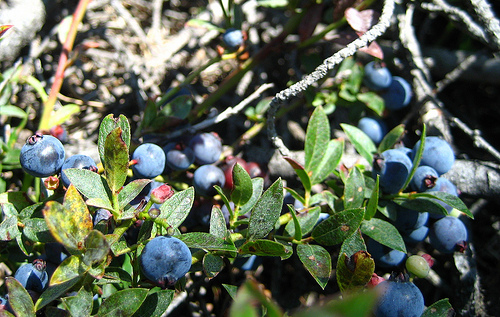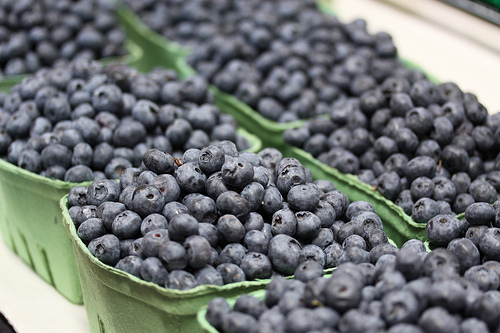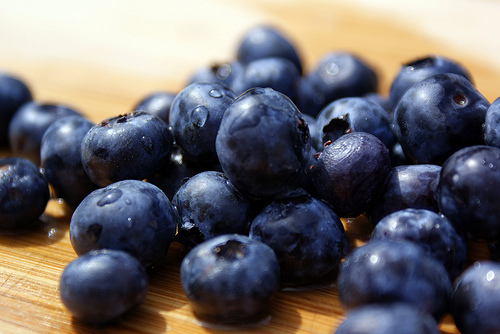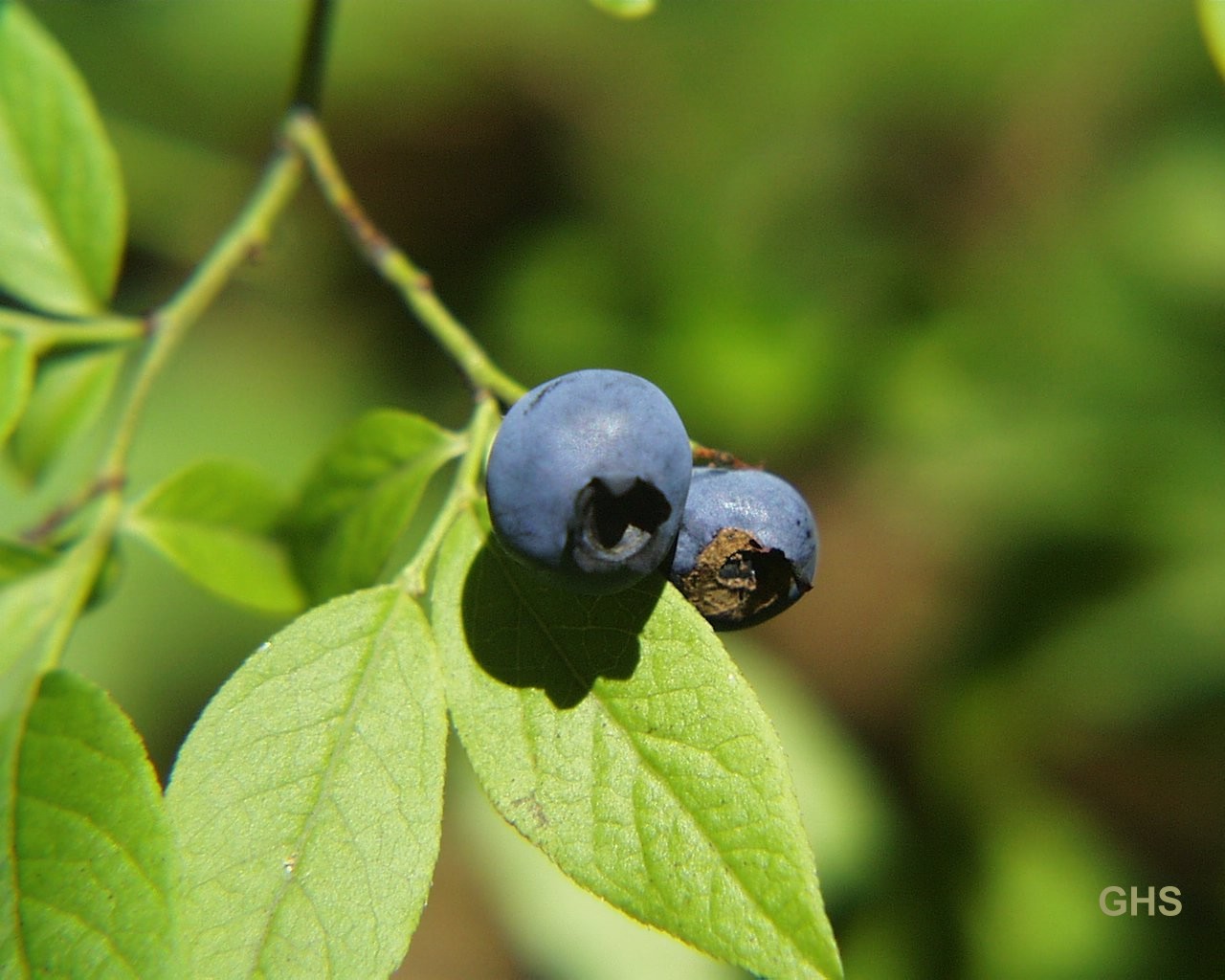Adaptation
Fire: One adaptation V. angustifolium has acquired
is the persistence to grow after a potentially harmful effect
such as the effects of fire. Where other plants may take
many years to start life again in that particular fire-stric ken area, lowbush blueberries flourish within just a few years of a fire. Plants sprout from underground rhizomes after the above
vegetation is destroyed by fire. You will see abundant growth
from lowbush blueberries after a fire. The overgrowth
vegetation has been wiped out and lowbush blueberries have an
adaptation to withstand the heat of a fire. The
underground rhizomes can
withstand extreme heat from fires and can survive forest
fires even though the rest of the plant dies. Rhizomes
have been recorded to withstand temperatures of up to 1,013° Fahrenheit (545 degrees°
Celsius). Fruit production
will occur abundantly within three years of a fire. For
more information on fire effects on V. angustifolium
click
here.
ken area, lowbush blueberries flourish within just a few years of a fire. Plants sprout from underground rhizomes after the above
vegetation is destroyed by fire. You will see abundant growth
from lowbush blueberries after a fire. The overgrowth
vegetation has been wiped out and lowbush blueberries have an
adaptation to withstand the heat of a fire. The
underground rhizomes can
withstand extreme heat from fires and can survive forest
fires even though the rest of the plant dies. Rhizomes
have been recorded to withstand temperatures of up to 1,013° Fahrenheit (545 degrees°
Celsius). Fruit production
will occur abundantly within three years of a fire. For
more information on fire effects on V. angustifolium
click
here.
Rhizomes: Rhizomes are lateral stems of plants and are usually found underground. This greatly increases the underground surface area that the plant covers. The root system extends laterally from the rhizome, covering even more underground area. This is why blueberry patches are found. This is an important adaptation for V. angustifolium. Given the conditions and habitat it grows in, characterized by mostly dry and sandy soil, this extensive underground system covers more ground area which increases water absorption. This rhizome system is also the part of the lowbush blueberry plant that survives the extreme heat of fire. A new root system and stem can grow from the underground rhizome.
Production of fruits: V. angustifolium is a true flowering plant, meaning its seeds are protected inside an ovary, or fruit. V. angustifolium produces sweet blueberries. The production of fruits increases the number of ways these seeds can be distributed. Instead of wind transportation, a number of different animals feed on the berries and transfer the seeds to new locations.
Flowers: The production of flowers offers greater reproductive success. A wide variety of insects pollinate the flowers. This cross fertilizes different plants, offering greater genetic diversity among plants and increases overall success of plants.
Leaves: These are incredibly important for V. angustifolium because this is the site for photosynthesis. This is how plants acquire their food through the production of sugars. The leaves also posses a waxy cuticle to prevent water loss. They also contain stomata which are pores surrounded by two guard cells. These regulate water loss and gas exhange, aiding in the successfulness of photosynthesis. To find out more about some of the structures of the lowbush blueberry plant as well as additional photos, click here.
Fungi: V. angustifolium has formed a special relationship with a specific type of mycorrhizal fungi called ericoid mycorrhizae. About 90% of plants in nature have some type of mycorrhizal interaction. V. angustifolium, as well as other plants, benefit by receiving an increased absorption of water and minerals. This is accomplished through the greatly increased surface area of the underground roots by the relationship with fungal hyphae.
Let's move on to Nutrition!




